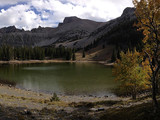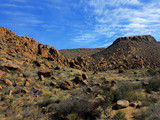Government Grants
Business Grants
Home Owner Programs
Federal Programs
About Us
Hemlock Woolly Adelgid Systemic Treatment Research Study-Letters of Interest
This is a request for letters of interest and is not a Funding Opportunity Announcement (FOA); therefore the National Park Service (NPS)-Great Smoky Mountains National Park (Park) is not accepting applications but is seeking to identify potential collaborators from capable and qualified sources including,
but not limited to, universities, university-affiliated research centers and private or public companies.
For the purposes of this announcement, NPS-GRSM seeks, in letters of interest, examples of current and previous research work conducted in this specific area of study:
Hemlock Woolly Adelgid (HWA) Systemic Treatment.
A research study is planned to aid in a long-term management plan for hemlocks in the Park by evaluating treatment regiments that maintain pesticides residuals in Eastern Hemlock at levels protective to the trees but minimizing potential for secondary impacts to non-target organisms or ecosystems.
BACKGROUND:
Eastern Hemlock (Tsuga canadensisis) is found throughout the Park in all forest types up to 5000 ft.
Hemlock plays an ecologically critical role as the Parks only shade tolerant tree.
This unique tree is seen as a keystone species with many associate values at risk (aesthetic, recreational and ecological).
Since 2002, hemlocks in the Park have been at threat of ecological extinction due to the introduction of Hemlock Woolly Adelgid (HWA), a non-native invasive forest pest.
Since finding HWA in the Park, vegetation branch personnel along with an array of volunteers have been actively trying to control adelgid populations to create tolerable conditions for hemlock survivability.
These treatments include systemic application of imidacloprid and dinotefuran insecticide (neonicotinoids), foliar spray of horticultural oils and soaps and releases of biological control (predatory beetles) Sasajiscymnus tsugae and Laricobious negrinus that feed on HWA.
Some treatments have been very effective with 150,000 systemic treatments to date and are all documented in a database.
The Park continues to lead regional land management efforts to control HWA with innovative application techniques and chemicals being utilized when possible.
One of the primary goals of the hemlock program is to establish Conservation Areas of treated hemlock trees that serve as a genetic storehouse for Tsuga canadensis and also a refugia for associate species that rely on the hemlock as a keystone species.
These areas were chosen to encompass a wide variety of forest types throughout the Park, all with a hemlock component.
Treatments in these areas have been varied with dosage of treatment, application methods and chemicals used.
Many known and unknown environmental factors as well have added to the equation of success in the Parks efforts such as:
initial health of trees at treatment, soil moisture and drought, percent of live canopy available to a tree, and diameter (volume) of treated tree.
In 2009, a pilot study was conducted to evaluate systemic pesticide residuals in the canopy of treated hemlocks in order to determine:
1) Residual concentrations needed to continue control of HWA without overtreating or undertreating, 2) Residence time of pesticides under various application methods and in various environmental conditions, 3) Translocation of chemicals in the canopy structure (i.e.
top, mid, lower canopy) and how that effects control.
In addition, the study also evaluated the mobility of the pesticides by assessing water quality of streams in proximity to chemically treated trees.
The study indicated that effective control (200ppb or greater of imidacloprid or metabolites) was still maintained in some trees that were originally healthy when treated six years prior to sampling and that others treated within the last two years barely registered concentrations.
Also, the ability of the metabolites of imidacloprid to maintain effective HWA control was also observed with a trend of these to translocate to the upper canopy, the reverse of imidacloprid.
Dinotefuran concentrations were not detected in canopy samples.
Sampling might have contained errors with contamination.
The water quality study found mostly all negative results with samples, however a few positive hits of small concentrations were observed with some being in the control sample site, thus needing further review.
Sampling might have contained errors with contamination.
Based on these results more study on the efficacy of the systemic treatments along with water quality monitoring in treatment areas is deemed appropriate.
OBJECTIVES:
A study will help develop an intimate understanding of the processes of the systemic treatments and their effect on tree health and surrounding resources.
A long- term management plan will then be developed using these findings to optimize efforts of HWA control and also minimize secondary effects on other valuable park resources.
The Park seeks to develop a long-term HWA treatment program that is inclusive in determining treatment/retreatment regimes, monitoring effectiveness and monitoring for secondary effects.
A program may include an exit strategy, an approach to phase chemical treatments out as biological controls or resistance indicators show promise.
A study may evaluate:
Specific chemical application rates and residuals needed to effectively control HWA in Eastern Hemlock in the Park; Considerations in chemical application based on the Park habitat and environmental conditions which may mitigate standard application procedures (i.e., site specific application methods to effectively control HWA based on micro-environments); Baseline residual determination of historic HWA treatment on non-target environments including aquatic habitats adjacent to treated HWA areas; Fate and transport of chemical treatment agents in the Park environment and:
Determination of effect levels to keystone aquatic and terrestrial ecosystems associated with chemical treatments (i.e., development of LOAEL and NOAEL).
Collaborator focus areas:
Quality assurance/quality control (QA/QC) methods in addition to performance evaluation (PE); EPA accreditation or equivalent (i.e., USGS etc); Experience and publication in evaluating pesticides using Liquid chromatography-mass spectrometry (LC MS/MS) or similar appropriate method; Data management plan may be included in a study design and be in accordance with the Parks data management plan and compliant with federal government meta data standards; Literature review of current understanding of the problem and current methods and results utilized to address the project objectives; Detailed budget for all tasks.
This is a request for letters of interest and is issued for information purposes.
It does not constitute a request for a formal proposal and responses to this notice are not offers and cannot be accepted by the Government to form a binding contract or agreement.
Submission is voluntary and is not required in order to submit a proposal on a subsequent FOA.
NPS-GRSM will not provide reimbursement for costs incurred in responding to this information request.
Respondents are advised that NPS-GRSM is not obligated to acknowledge receipt of the letters received or provide feedback with respect to any information submitted under this request.
For the purposes of this announcement, NPS-GRSM seeks, in letters of interest, examples of current and previous research work conducted in this specific area of study:
Hemlock Woolly Adelgid (HWA) Systemic Treatment.
A research study is planned to aid in a long-term management plan for hemlocks in the Park by evaluating treatment regiments that maintain pesticides residuals in Eastern Hemlock at levels protective to the trees but minimizing potential for secondary impacts to non-target organisms or ecosystems.
BACKGROUND:
Eastern Hemlock (Tsuga canadensisis) is found throughout the Park in all forest types up to 5000 ft.
Hemlock plays an ecologically critical role as the Parks only shade tolerant tree.
This unique tree is seen as a keystone species with many associate values at risk (aesthetic, recreational and ecological).
Since 2002, hemlocks in the Park have been at threat of ecological extinction due to the introduction of Hemlock Woolly Adelgid (HWA), a non-native invasive forest pest.
Since finding HWA in the Park, vegetation branch personnel along with an array of volunteers have been actively trying to control adelgid populations to create tolerable conditions for hemlock survivability.
These treatments include systemic application of imidacloprid and dinotefuran insecticide (neonicotinoids), foliar spray of horticultural oils and soaps and releases of biological control (predatory beetles) Sasajiscymnus tsugae and Laricobious negrinus that feed on HWA.
Some treatments have been very effective with 150,000 systemic treatments to date and are all documented in a database.
The Park continues to lead regional land management efforts to control HWA with innovative application techniques and chemicals being utilized when possible.
One of the primary goals of the hemlock program is to establish Conservation Areas of treated hemlock trees that serve as a genetic storehouse for Tsuga canadensis and also a refugia for associate species that rely on the hemlock as a keystone species.
These areas were chosen to encompass a wide variety of forest types throughout the Park, all with a hemlock component.
Treatments in these areas have been varied with dosage of treatment, application methods and chemicals used.
Many known and unknown environmental factors as well have added to the equation of success in the Parks efforts such as:
initial health of trees at treatment, soil moisture and drought, percent of live canopy available to a tree, and diameter (volume) of treated tree.
In 2009, a pilot study was conducted to evaluate systemic pesticide residuals in the canopy of treated hemlocks in order to determine:
1) Residual concentrations needed to continue control of HWA without overtreating or undertreating, 2) Residence time of pesticides under various application methods and in various environmental conditions, 3) Translocation of chemicals in the canopy structure (i.e.
top, mid, lower canopy) and how that effects control.
In addition, the study also evaluated the mobility of the pesticides by assessing water quality of streams in proximity to chemically treated trees.
The study indicated that effective control (200ppb or greater of imidacloprid or metabolites) was still maintained in some trees that were originally healthy when treated six years prior to sampling and that others treated within the last two years barely registered concentrations.
Also, the ability of the metabolites of imidacloprid to maintain effective HWA control was also observed with a trend of these to translocate to the upper canopy, the reverse of imidacloprid.
Dinotefuran concentrations were not detected in canopy samples.
Sampling might have contained errors with contamination.
The water quality study found mostly all negative results with samples, however a few positive hits of small concentrations were observed with some being in the control sample site, thus needing further review.
Sampling might have contained errors with contamination.
Based on these results more study on the efficacy of the systemic treatments along with water quality monitoring in treatment areas is deemed appropriate.
OBJECTIVES:
A study will help develop an intimate understanding of the processes of the systemic treatments and their effect on tree health and surrounding resources.
A long- term management plan will then be developed using these findings to optimize efforts of HWA control and also minimize secondary effects on other valuable park resources.
The Park seeks to develop a long-term HWA treatment program that is inclusive in determining treatment/retreatment regimes, monitoring effectiveness and monitoring for secondary effects.
A program may include an exit strategy, an approach to phase chemical treatments out as biological controls or resistance indicators show promise.
A study may evaluate:
Specific chemical application rates and residuals needed to effectively control HWA in Eastern Hemlock in the Park; Considerations in chemical application based on the Park habitat and environmental conditions which may mitigate standard application procedures (i.e., site specific application methods to effectively control HWA based on micro-environments); Baseline residual determination of historic HWA treatment on non-target environments including aquatic habitats adjacent to treated HWA areas; Fate and transport of chemical treatment agents in the Park environment and:
Determination of effect levels to keystone aquatic and terrestrial ecosystems associated with chemical treatments (i.e., development of LOAEL and NOAEL).
Collaborator focus areas:
Quality assurance/quality control (QA/QC) methods in addition to performance evaluation (PE); EPA accreditation or equivalent (i.e., USGS etc); Experience and publication in evaluating pesticides using Liquid chromatography-mass spectrometry (LC MS/MS) or similar appropriate method; Data management plan may be included in a study design and be in accordance with the Parks data management plan and compliant with federal government meta data standards; Literature review of current understanding of the problem and current methods and results utilized to address the project objectives; Detailed budget for all tasks.
This is a request for letters of interest and is issued for information purposes.
It does not constitute a request for a formal proposal and responses to this notice are not offers and cannot be accepted by the Government to form a binding contract or agreement.
Submission is voluntary and is not required in order to submit a proposal on a subsequent FOA.
NPS-GRSM will not provide reimbursement for costs incurred in responding to this information request.
Respondents are advised that NPS-GRSM is not obligated to acknowledge receipt of the letters received or provide feedback with respect to any information submitted under this request.
Obtain Full Opportunity Text:
Not Available
Additional Information of Eligibility:
Not Available
Full Opportunity Web Address:
Contact:
Judith CouchFinancial Agreements SpecialistPhone 865-436-1224
Agency Email Description:
Agency Email:
judy_couch@nps.gov
Date Posted:
2010-06-11
Application Due Date:
2010-06-25
Archive Date:
2010-07-25
Social Entrepreneurship
Spotlight
When it Comes to Social Enterprises, Failure is the Best Platform for Innovation

In the world of social enterprises, failure is a cringe-worthy moment nobody wants to talk about. But, social entrepreneurs can benefit from their failures.





